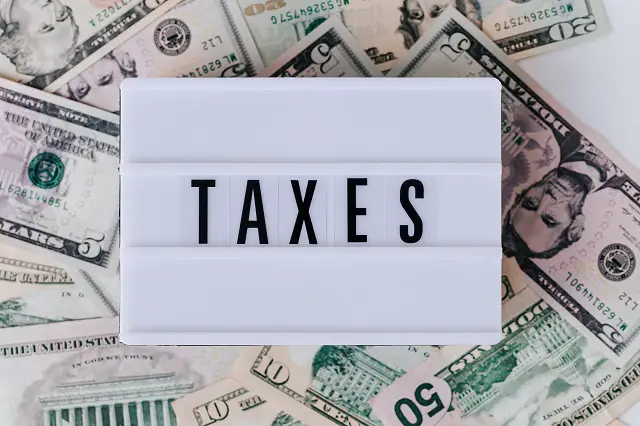As you might already know if you are a taxpayer in the United States, the IRS stands for the Internal Revenue Service. It is the US federal government’s revenue service, the body responsible for tax collection and administration of the Internal Revenue Code under the statutory tax law. Unlike in the past where tax fraud and evasion were the order of the day, the adoption of various technologies has and will help the IRS to streamline processes and stay ahead of the game.
More people have and will become compliant with the tax regulations of the land, leading to higher revenues collected over the past few years. This, in turn, means more money going into funding the national/federal government operations and building the nation. But are these innovative technologies foolproof? What about security loopholes? How does the taxpayer benefit from the so-called IRS modernization program unveiled in 2019? Well, it is only natural to have several questions about the dependability and sustainability of the same. In this piece, we shall look at six pros and cons of the adoption of innovative technologies and their usage by the IRS.
The Pros:
1. Reduced Costs
Over the years, the IRS has dealt with a bunch of challenges, including tax law complexities, budgetary constraints, and a decreasing workforce. Alongside an overly complex technical ecosystem, these factors have been seen to lead to extremely high costs for the American taxation body in the collection, processing, and enforcement of taxation for the nation. According to the IRS modernization plan of improving the IT infrastructure from 2019 to 2024, the adopted innovative technologies will help bring the costs down once fully implemented. Modernized IRS operations will help cut the costs through various ways, including:
- Reducing manual effort and error
- Robotic automation to streamline processes and increase TAT
- Allowing more paperless transactions
- Using various technological approaches like Agile, Cloud, APIs, and DevOps for a better IT infrastructure
2. Enhanced Taxpayer Data Security
Cybersecurity has been a major concern around the globe over the past few years. During the pandemic, Americans have actually been warned through various media platforms to watch out for different kinds of tax scams. Some of these are through text messages, emails, or mail deliveries. If you click here, Kyle Burbank narrates her experience and says that even though not all IRS mail is a scam, the possibility cannot be ruled out. If you are not expecting any sort of communication from the IRS, it pays to be cautious and ask questions.
Well, in most of these issues, the scam artist is out to fish for your taxpayer data and use it for their own malicious intentions. Now, here comes the best part. With modern innovative technologies, the IRS oversees rock-solid security and the protection of taxpayer data. Taxpayer data protection is actually among the top priorities of the modernization plan. This will be through various tools, including enhancing cybersecurity protocol and advanced analytics.
3. Enhanced Taxpayer Convenience and Experience
In addition to improved data security, the IRS seeks to use advanced technology to improve taxpayer convenience and overall experience. This is basically by improving how the tax agency interacts and connects with taxpayers as well as the tax community through various online applications and web tools. The six-year strategy IRS modernization plan also seeks to provide superior services on tax payment matters through a modernized IT infrastructure that creates a central ecosystem for all their taxation needs. It will also include the expanded ability to convert documentation and paper case files into digital files.
Nonetheless, non-electronic communication channels will be maintained but improved for better interaction with taxpayers. In summary, some factors that will help improve the overall taxpayer experience include:
- Expanded digital options
- Real-time Tax Processing
- Better account management
- Integrated case management
- Improved traditional channels
- Simplified proactive taxpayer services
4. Easier Detection of Tax Noncompliance
It goes without saying that tax noncompliance is the enemy of development in any nation. With innovative technologies, tax non-compliance will be detected and addressed earlier before it cripples the offender. Since not all tax offenders do it willingly, this will be a win-win for both the federal government and the taxpayer.

Cons:
5. It Could Cost Taxpayers More
According to the modernization plan, the IRS systems and taxpayer services are to be modernized in two phases of three years each as from 2019 through to 2024. According to the estimates, complete implementation will cost somewhere between a whopping two and three billion US dollars in the six years. There have been rumors that the IRS modernization initiative still lacks funding but it might be too early to judge considering the pandemic interference. All the same, this money will definitely come from taxpayers’ pockets.
6. Implementation Delays Cannot Be Ruled Out
As hinted above, complete implementation delays could be anticipated out of funding snarl-ups. The ability to beat the proposed timelines will also depend on how fast the reporting and oversight processes with congress will proceed. Furthermore, the tax community is also a stakeholder in the initiative, so their sentiments could also affect the implementation speed.
To sum it up, the new IRS initiative is a good thing for the nation. The perks by far beat the downsides. It is every cautious American taxpayer’s hope to see it through and it turns out to be as effective as it is projected to be.




